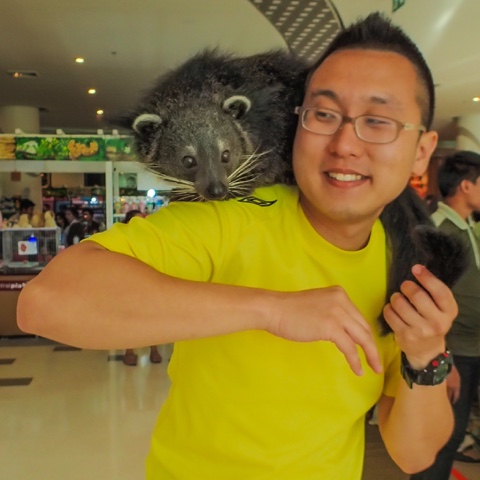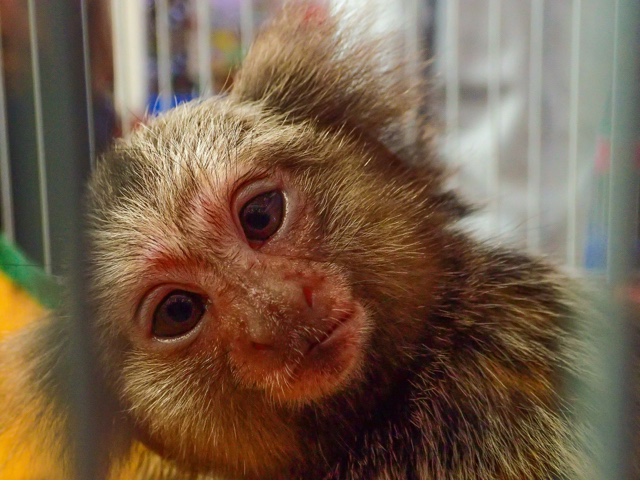Below: the unexpected highlight of our visit to Ubon.
At the immigration checkpoint, we were reminded that borders are simply arbitrary, imaginary lines made permanent only by conviction. There wasn't even a fixed border. Skirmishes in the late 1980s between Thai and Lao forces further north precipitated the establishment of a commission to resolve the border dispute. Nearly three decades on, the lines are, literally, still being drawn.
Northeastern Thailand: a very brief history
The city of Ubon Ratchathani is part of the wider region of Isan, coterminous with northeastern Thailand, which comprises nearly a third of both Thailand's land area and population. Here, Central Thai vies to be spoken with Khmer and Lao, to the last of which the majority Isan language is closely related. It reflects the three-way contestation for political dominance of previous centuries in this part of the country.
In the wake of Khmer decline from the thirteenth century onwards, Lao influence under the Lan Xang Kingdom held sway in the region. The steady growth of Siamese power in turn fed on Lan Xang's decline, which later split into the Kingdoms of Luang Prabang, Vientiane and Champasak. The city of Ubon Ratchathani was founded in the late eighteenth century by Lao princes fleeing southwest from the post-Lan Xang chaos. The irruption of French colonialism a century later posed a new challenge. It was in response to French policies on the other side of the Mekong that Siam and later Thailand worked to secure the loyalties of the Isan peoples through policies designed to entrench their identification with being Thai. Today, the level of development continues to lag behind the Central Thai provinces, and the area is seen as a cultural backwater. Isan identity has also become embroiled in Thailand's recent political wrangling, with even talks of secession surfacing.
Below: We imagine many things - lines on earth being one of the more enduring ones.
Ubon Ratchathani: Cursory Glances
Our plan for the half-day we had in Ubon Ratchathani was to spend half of it sightseeing, and another half in the mall. We didn't stray far from Thung Si Muang, the little park in the city centre just across the road from Hotel Ratchathani where we stayed. A 45-minute walk took in the City Pillar Shrine, the Candle Monument and Wat Thung Si Muang. At the last-named landmark, our itinerary withered under the unrelenting 36°C-day. Mary was visibly vexed, and we quickly hopped into a taxi for the mall.
Below: The City Pillar Shrine, erected in 1972, housed the, well, City Pillar. In Thailand, these have come to form part of the sacral architecture intended to cement ties between Bangkok and the provinces.
Below: The Candle Monument, completed more recently in 2000, commemorates the annual Candle Festival held in the city. This marks the advent of Khao Phansa, the annual monks' rainy season retreat. Traditionally, the villagers presented candles to the monks as lights to aid their prayers and reading.
Below: East of Thung Si Muang stands Wat Thung Si Muang, built to house a replica of the Buddha's footprint. The grounds also contain a wooden library raised on stilts in the middle of a lily-filled pond, constructed thus to prevent crawling insects from getting to the precious manuscripts.
Our visit to the mall coincided with a pet fair, which we smelt long before we saw. There was the usual assortment of puppies, kittens, rabbits, hamsters and turtles, as well as a not so typical supporting cast of raptors, prairie dogs, marmosets and a lone squirrel monkey. For us, the undoubted stars of the show were the two binturongs who made special appearances later in the afternoon.
The animals were disarmingly adorable, but the double standards involved were not lost on us. Nearly all the creatures were caged. Perhaps many of these never knew a life beyond bars, and were happy to snuggle and scamper about to the delight of on-lookers. Several others looked as though they could never know contentment until they were freed. Their responses to restriction ranged from resignation, to restlessness, to rage. It was heart-rending. After playing Groot to the binturong's Rocket, I had gushed to Mary about how we should have one at home. The thought, however, that a cub may be torn from its mother's breast killed any such intentions.
Above (top to bottom): Caged predicaments, from contentment; to resignation; to restlessness; to rage; to regality; to utter indifference. Also note how human primates (marmoset and squirrel monkey, second and third from top) and rodents (the prairie dog, fourth from top) actually can be, with their doleful eyes and nimble figures.
Below (top to bottom): My favourite animal (binturong), perched atop my wife's favourite animal (me); Central Plaza, Ubon Ratchathani, looking a bit like Noah's Ark on the thirty-ninth day.
Below: Leaving Ubon Ratchathani International Airport, which, like several other Thai airports in the region, were once upon a time used as staging grounds in the American effort to render Laos the most bombed country on earth.
The binturongs were the highlight of a short day, and could vie with the spectacular Mekong waterfalls to be the most memorable experience on this trip. On our taxi back from the mall, close to eight in the evening, we passed a bustling couple of night markets. It was a far cry from Pakse, where street life ebbed with the light of day.















No comments:
Post a Comment